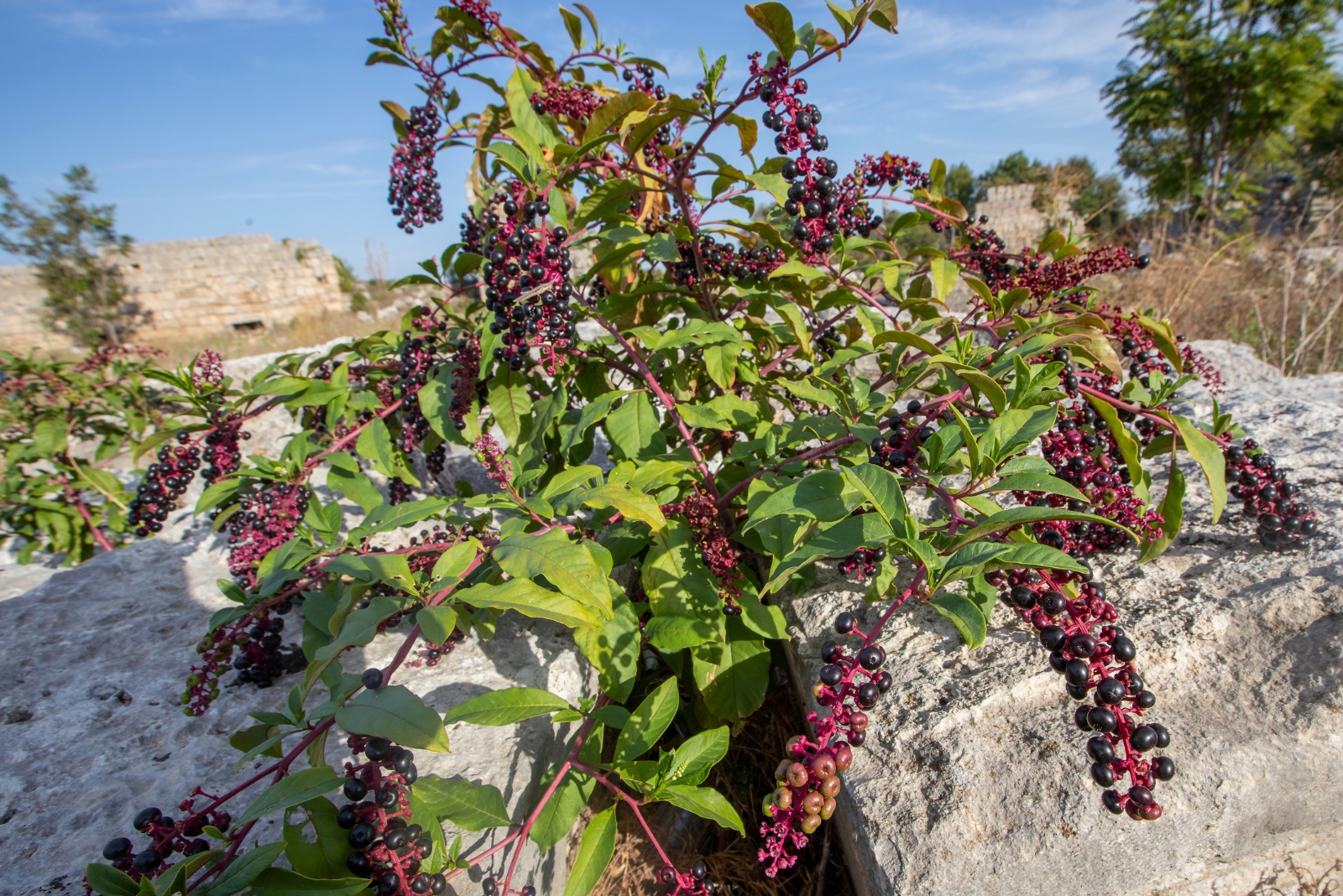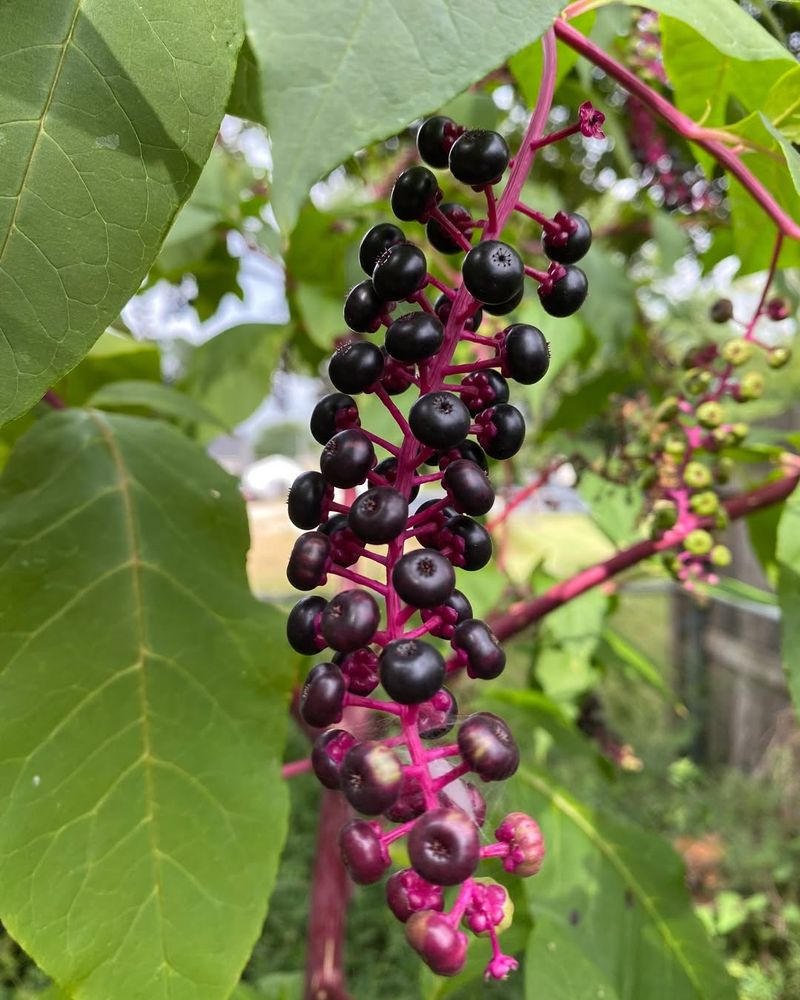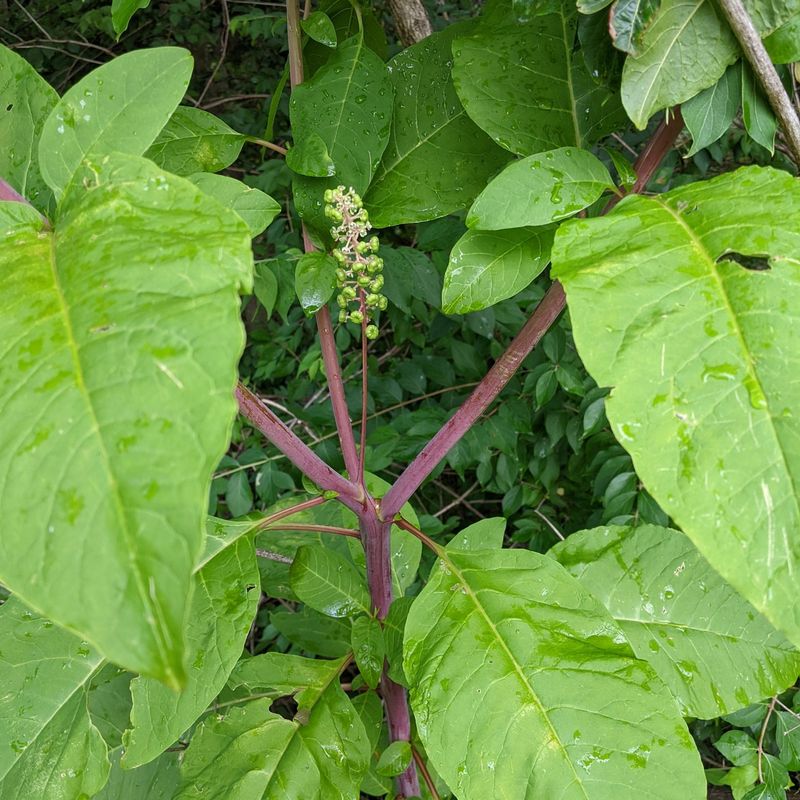I used to yank pokeweed out of my yard thinking it was just another fast-growing nuisance, and I couldn’t have been more wrong. That glossy stem and innocent little leaves fooled me until I learned how toxic this plant really is.
Once you spot how quickly it spreads, you start realizing why so many Texas homeowners misjudge it as a harmless weed. If you’ve ever second-guessed a strange plant in your yard, pokeweed is definitely one to keep an eye on.
1. It Pops Up Without Being Planted
Pokeweed shows up in yards across Texas without any invitation, sprouting wherever birds drop its seeds. Homeowners naturally assume anything they didn’t plant must be a weed.
Birds love the dark purple berries and spread seeds everywhere through their droppings. Before you know it, a tall pokeweed plant appears near your fence or garden bed.
Most Texans prefer knowing exactly what’s growing in their space, so mystery plants often get yanked out immediately.
2. Its Rapid Growth Seems Aggressive
Pokeweed can shoot up several feet in just a few weeks during Texas’s warm growing season. Such explosive growth makes homeowners nervous because typical weeds grow quickly too.
When something sprouts from nothing and towers over your petunias in no time, alarm bells go off. People worry it’ll take over their entire garden if left unchecked.
In reality, pokeweed grows tall but doesn’t usually spread aggressively like invasive species do around the Lone Star State.
3. The Leaves Look Unfamiliar
Most Texas gardeners recognize common landscape plants, but pokeweed’s big, oval leaves don’t match anything they’ve planted. Unfamiliar foliage often gets labeled as weedy by default.
The leaves can grow quite large, sometimes reaching a foot long, which seems unusual for ornamental plants. Their simple shape and bright green color don’t scream “garden-worthy” to untrained eyes.
Without knowing pokeweed’s native status, homeowners assume it’s just another uninvited guest cluttering their flowerbeds.
4. It Grows in Weird Spots
Pokeweed loves disturbed soil and pops up along fence lines, ditches, and forgotten corners of Texas yards. Weeds typically thrive in these neglected areas, so the association makes sense.
Homeowners rarely plant anything intentionally in these spots, so whatever grows there must be unwanted, right? The plant’s preference for edge habitats reinforces the weed stereotype.
Even though pokeweed is native, its choice of real estate doesn’t help its reputation among tidy gardeners statewide.
5. The Berries Look Suspicious
When pokeweed produces its signature dark purple berries on bright red stems, many Texans get concerned. The dramatic coloring seems too wild and untamed for a respectable garden plant.
Parents especially worry because the berries can make people sick if eaten, which sounds exactly like something a dangerous weed would do. The striking appearance doesn’t match typical landscape shrubs.
Beautiful native plants often get misunderstood when their features seem more wilderness than suburban yard material.
6. Nobody Talks About It Positively
Walk into any Texas garden center and you won’t find pokeweed for sale alongside the petunias and tomatoes. When plants aren’t commercially available, people assume they’re worthless or problematic.
Neighbors rarely chat about the benefits of pokeweed over backyard fences either. The lack of positive buzz makes it easy to dismiss as just another nuisance.
Without education about native plants, homeowners miss out on understanding pokeweed’s ecological value and historical uses throughout the state.
7. It Dies Back Messily Each Year
As temperatures drop in Texas, pokeweed turns brown and collapses into an unattractive heap. Homeowners see this messy decline and think it’s behaving like a weed that needs removal.
Ornamental perennials usually fade more gracefully or get trimmed back neatly for winter. Pokeweed’s dramatic end-of-season appearance doesn’t win any beauty contests.
Many folks don’t realize it’s a natural perennial cycle and will return fresh and green when spring warmth arrives again.
8. No One Taught Them Otherwise
Most Texas homeowners never learned about native plants in school or from their parents. Without that knowledge, distinguishing between weeds and valuable natives becomes nearly impossible.
Garden education typically focuses on popular flowers and vegetables, leaving pokeweed and similar plants in the shadows. People default to removing anything unfamiliar rather than researching first.
A little education about native species could transform how Texans view the wild plants that naturally belong in their landscapes and ecosystems.









